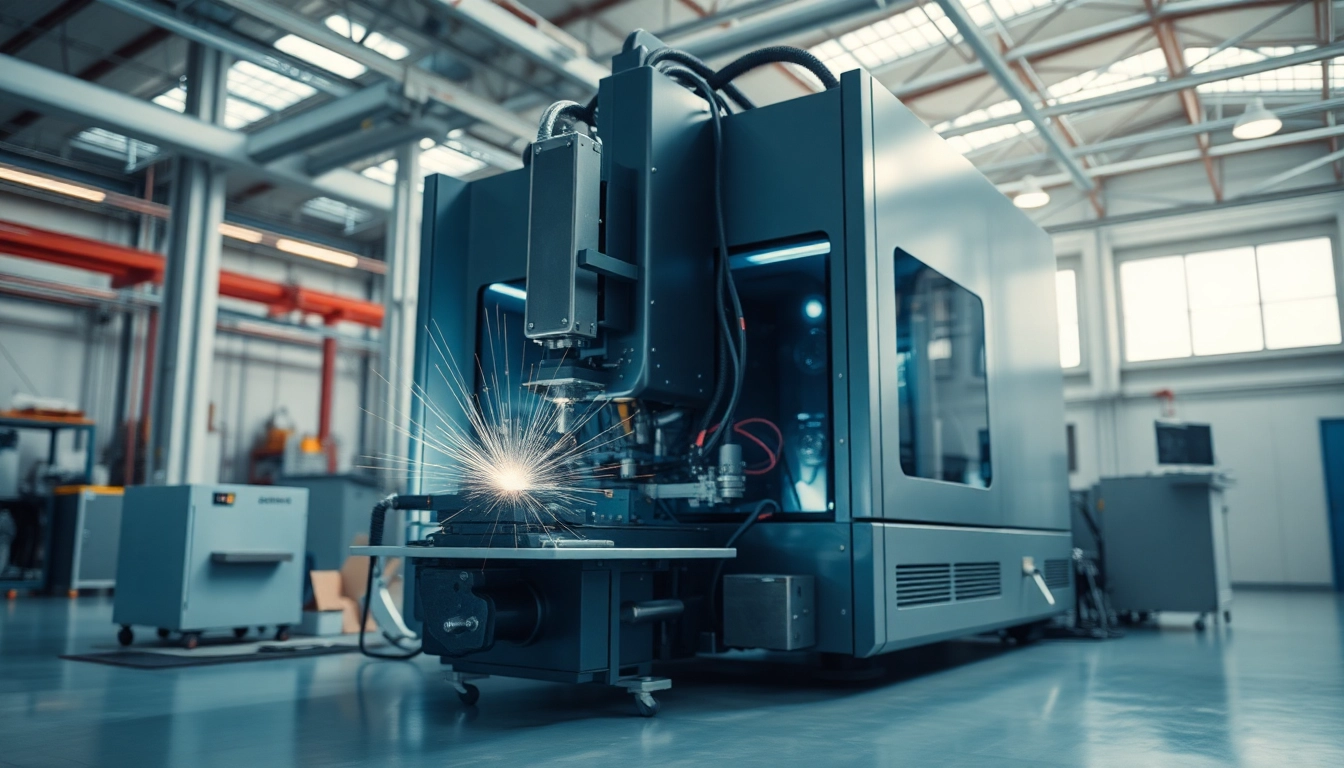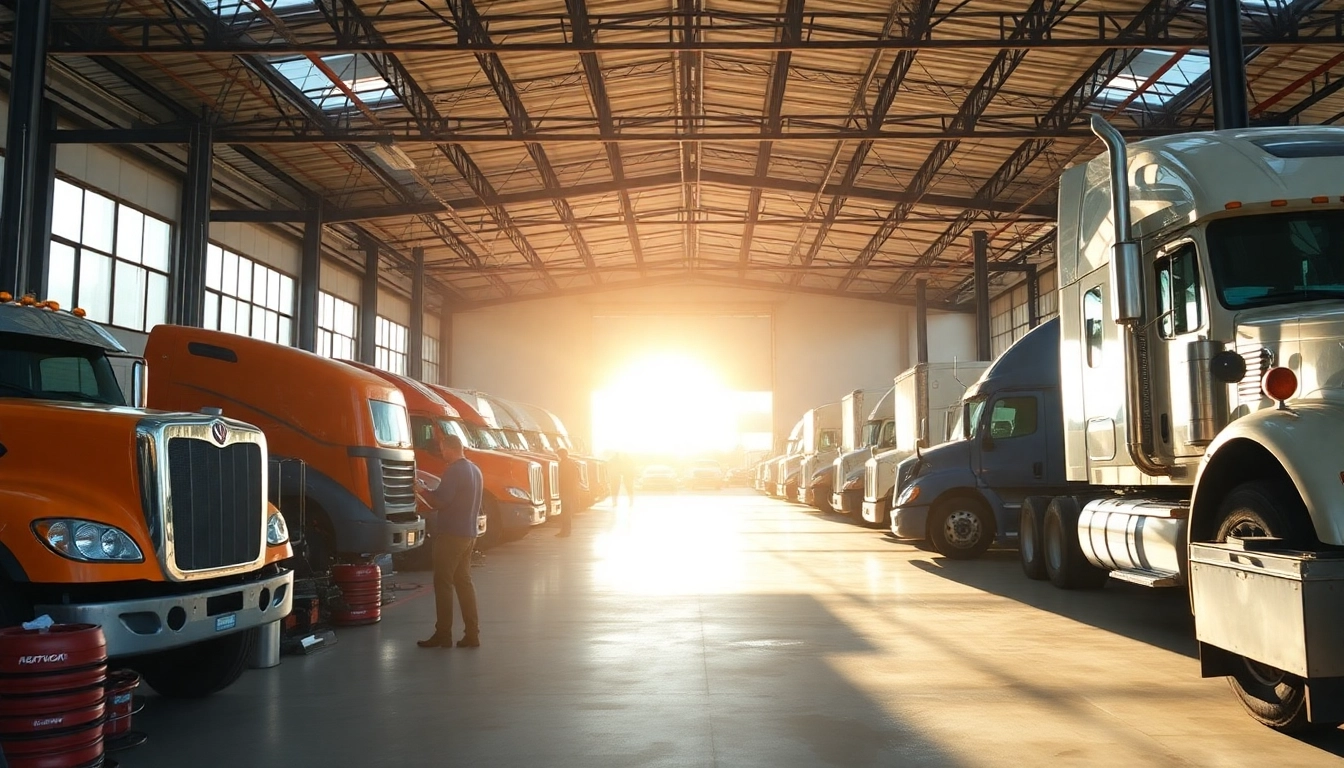Understanding the Fundamentals of Laser Welding Machine
What is a Laser Welding Machine?
A Laser welding machine is a sophisticated tool used in various manufacturing processes to join materials together using focused laser beams. These machines capitalize on the high concentration of energy provided by laser light to heat and melt metals, effectively creating strong and durable welds. They are ideal for various applications, primarily in the automotive, aerospace, and electronics industries, where precision and strength are paramount. The choice of lasers, materials, and techniques can vastly affect the outcome, making knowledge of their fundamentals essential for optimal usage.
How Laser Welding Works
Laser welding operates by directing a high-powered laser beam onto the workpiece, producing a concentrated heat source that melts the base material. The process can be conducted in two primary modes:
- Conduction Mode: This method is preferred for thin materials and involves the laser heating the surface, allowing the heat to dissipate into the workpiece for deeper penetration.
- Keyhole Mode: Used for thicker materials, this mode involves the formation of a vapor cavity (keyhole) in the molten metal, allowing the laser beam to penetrate deeply and create strong welds.
The quality of the weld is influenced by various factors, including laser power, speed, and focus. The machine’s computer-controlled settings play a crucial role in ensuring consistent results, enabling manufacturers to produce high-quality welds with repeatability and less human error.
Common Applications for Laser Welding Machine
Laser welding machines are versatile and have found applications across numerous industries. Here are some common uses:
- Aerospace Industry: Used for joining intricate components where precision is critical, such as turbine blades and fuselage assemblies.
- Automotive Manufacturing: Employed in the assembly of various car parts like body panels, exhaust systems, and fuel tank assemblies to ensure lightweight yet robust structures.
- Medical Device Production: Vital in the manufacturing of precision components such as stents and surgical instruments, where small, strong welds are necessary.
- Electronics: Utilized for assembling delicate components in devices like smartphones and computers where traditional bonding methods can lead to heat damage.
Advantages of Using a Laser Welding Machine
Precision and Accuracy in Welding
One of the most significant benefits of using a Laser welding machine is the unparalleled level of precision it offers. The high degree of control over the laser beam allows for incredibly fine welds, which is essential in industries where tolerances are tight. For instance, in aerospace and electronics, even minute discrepancies can lead to product failures. Laser welding ensures that the materials are fused without excessive heat, reducing deformation and maintaining the integrity of the components.
Improved Production Efficiency
Laser welding machines significantly improve production efficiency over traditional welding methods. With their ability to perform high-speed welding, these machines can operate continuously with minimal downtime. Additionally, they reduce the need for subsequent machining or finishing processes, streamlining the overall manufacturing timeline. As industries strive for lean manufacturing principles, laser welding stands out as a method that enhances throughput without compromising quality.
Cost-Effectiveness Over Time
While the initial investment in a laser welding machine can be high, the long-term cost benefits typically outweigh these costs. Laser welding machines require less maintenance due to fewer moving parts compared to traditional welding machines, translating into lower operational costs. Furthermore, the reduction in defects and rework results in fewer material waste and labor costs, ensuring a better return on investment. Over time, companies can realize significant savings through enhanced efficiency and reduced operational expenses.
Choosing the Right Laser Welding Machine for Your Needs
Key Features to Consider
When selecting a laser welding machine, it is crucial to evaluate several key features to ensure that the machine meets the specific requirements of your application:
- Laser Type: Different processes require different types of lasers, such as fiber, CO2, or solid-state lasers. Each has its unique advantages based on the material and thickness being welded.
- Power Output: The required power output will depend on the thickness of the materials being welded and the welding speed. High-power lasers are necessary for thicker materials, while lower-powered options are suitable for thinner sections.
- Cooling Systems: Proper cooling mechanisms are essential to ensure consistent welding quality and longevity of the machine.
- Automation: Highly automated systems can improve efficiency by reducing human intervention, allowing operations to run smoothly with greater precision.
Cost vs. Performance Analysis
Performing a cost vs. performance analysis is critical when deciding on a laser welding machine. It involves evaluating the potential return on investment based on the machine’s capabilities against its cost. Factors to consider include:
- Upfront cost versus long-term operational costs.
- The expected throughput and efficiency improvements that justify the investment.
- The potential savings from reduced rework and material waste.
It is advisable to conduct a thorough assessment of your production needs and align them with the capabilities of the laser welding machine you are considering to ensure you achieve the best balance of cost and performance.
Target Industries and Applications
Different industries have unique requirements for laser welding machines. Understanding the specific applications for which the machine will be used is essential. For example:
- Automobile Manufacturing: Requirements for speed and precision to meet production schedules and performance standards.
- Aerospace: Focus on ultra-precise welding for safety-critical components.
- Medical Devices: Emphasis on cleanliness and precision
Answering these questions will help narrow down the options to find the machine best suited for your specific applications.
Best Practices for Operating a Laser Welding Machine
Safety Protocols When Using Laser Welding Machine
Operating a Laser welding machine involves various safety considerations. Ensure that operators are trained and aware of the potential hazards associated with laser welding. Key protocols to include:
- Wearing appropriate personal protective equipment (PPE), including laser safety goggles.
- Ensuring proper ventilation in the workspace to avoid inhalation of fumes generated during welding.
- Establishing clear safety zones to keep unauthorized personnel away from operational areas.
Routine Maintenance Tips
Regular maintenance of the laser welding machine is essential for ensuring its longevity and optimal performance. Consider implementing the following best practices:
- Regularly clean the optics and lenses to avoid damage caused by contamination.
- Inspect and maintain the cooling systems to prevent overheating.
- Perform routine checks on various machine components such as circulatory systems, sensors, and software to ensure they operate correctly.
Optimizing Performance through Calibration
Calibration is crucial to ensuring the laser welding machine operates at its highest efficiency. Regular calibration helps in adjusting the machine’s settings to adapt to variable conditions. This involves:
- Verifying laser power and timing to ensure consistent output.
- Testing different focus lengths and beam penetration settings based on material thickness.
- Ensuring that the cooling system functions optimally during operation.
By prioritizing calibration and maintaining the correct settings, operators can significantly improve the effectiveness and quality of their welding outcomes.
Future Trends in Laser Welding Technology
Innovations on the Horizon
The field of laser welding is constantly evolving through the integration of advanced technologies. Emerging innovations include:
- Machine Learning: Machine learning algorithms that analyze operational data can enhance process parameters for improved weld quality.
- Solid-State Lasers: The development of efficient solid-state lasers and their integration into portable tools allows for more applications and easier handling.
- Hybrid Processes: Combining laser welding with other joining technologies can result in improved flexibility and efficiency in operations.
The Impact of Automation
Automation in laser welding is reshaping the landscape of manufacturing. Automated systems ensure consistent outputs without fluctuation due to human error. Innovations such as:
- Collaborative robots (cobots) for laser welding enhance operational flexibility and safety.
- Fully automated welding cells that integrate laser technology can serve to streamline the entire manufacturing process.
As automation technology continues to improve, the overall efficiency, reliability, and safety of operations are set to increase.
Ecological Considerations in Laser Welding Machine
With growing environmental concerns, manufacturers are prioritizing sustainability in their operations. Laser welding offers various ecological benefits:
- Reduced energy consumption compared to traditional welding methods due to the high efficiency of lasers.
- Minimized waste production thanks to precision capabilities, ensuring that materials are not overused.
- Cleaner operating processes that limit harmful emissions and fumes.
As the industry shifts toward greener manufacturing practices, adopting laser welding technology can be a strategic move that aligns efficiency with environmental responsibility.



